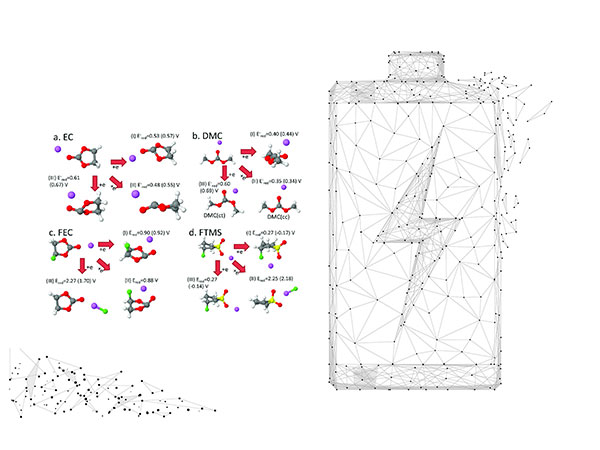December 1, 2017 | News Brief | A team of Army scientists working on more efficient batteries. In an invited paper published in the special issue of the Accounts of Chemical Research, Dr. Oleg Borodin, along with collaborators Drs. Arthur von Wald Cresce, Jaroslaw Knap, Xiaoming Ren and Kang Xu from the US Army Research Laboratory, discussed modeling insights into battery electrolyte structure and stability.

“Lithium-ion batteries dominate energy storage for portable electronics and are penetrating automotive and grid-storage applications,” said Borodin, senior computational chemist at the ARL Electrochemistry Branch. “Further progress depends not only on the development of a new high capacity electrode, but also on tailoring electrolytes in order to support fast and yet reversible lithium transport through the bulk electrolyte and across interfaces.”
Electrolytes
For batteries to work, electrolytes (a substance that is sandwiched between positive and negative electrodes) must conduct electric current in ionic form while insulating any electron current. The properties of the electrolyte pre-determine how fast the battery can deliver power or absorb charge (power density), and how long the battery can last (electrochemical stability).
One of the two factors must be met to achieve stability, the team concluded. Electrolytes must be either “thermodynamically stable with electrodes, or form a stable passivation layer that should be electronically insulating but ionically conducting while accommodating mechanical stresses due to electrode volume changes during battery cycling”, Borodin said.
Thermodynamic stability happens when a system is in its lowest energy state, or chemical equilibrium, with its environment. While thermodynamic stability is highly desired and most ideal, it can rarely be achieved in reality, and passivation is often the approach to stability, which builds up a kinetic barrier and place the system in a meta-stable equilibrium with its environment.
“The Li-ion battery operates under the principle of this meta-stability,” said Xu, an ARL fellow who specializes in electrolytes.
In recent years, the team led by Xu and Borodin has produced many electrolyte and battery innovations, which includes a new class of high-voltage aqueous electrolytes in collaboration with Prof. Chunsheng Wang, professor of Chemical and Biomolecular Engineering at the University of Maryland’s A. James Clark School of Engineering.
Earlier this year, the laboratory honored Borodin, Cresce and Xu with the ARL Award of Science for their work on 4-volt aqueous Li-ion Batteries.
“The highly complementary collaboration between Borodin and myself is an excellent example for the collaboration between computation and experimental scientists,” Xu said.
Conclusion
“We demonstrate that depending on their chemical structures, the anions could be designed to preferentially adsorb or desorb from the positive electrode with increasing electrode potential,” Borodin concluded. “This provides additional leverage to dictate the order of anion oxidation and to effectively select a sacrificial anion for decomposition.”







